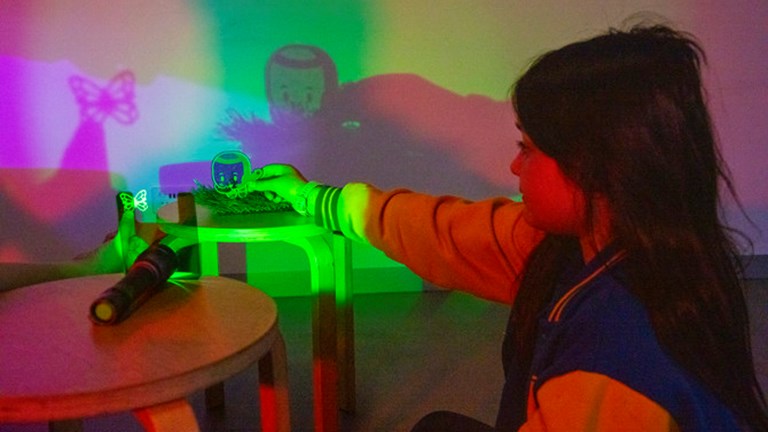Changing shadows and shadow play
Suitable for Year Levels 3-6
Students play with shadows and learn about the type of shadows cast by opaque, translucent and transparent objects.
Watch the video with Tom demonstrating different types of shadows made by different types of objects.
Tom explains that light travels in straight lines. The angle of light falling on an object can change the shape of the shadow. To form a shadow, we need to block the light. Blocking light makes shadows because light travels in straight lines.
Test your understanding
- What would happen to the shadows if light did not travel in straight lines?
- What is the difference between objects that are translucent, transparent and opaque?
What to do
- Find objects around the house or school that are translucent, transparent and opaque.
- Using these objects, create art works with the shadows these objects make.
- Watch the video to get some inspiration from Vincent Bal who is famous for being very creative with using shadows to create artworks.
- Have you ever noticed that your shadow is longer during the morning or afternoon compared to midday? Tom demonstrates this in the video. Why do you think that is?
- Go outside on a sunny day and trace your shadow with some chalk in the morning, midday and the afternoon. Make sure you stand in the same place each time. What do you notice?
Challenge
Create a fun shadow using lots of everyday objects and a torch and then take a photo of just the shadow you created without giving away what objects you used. Try using different angles of light to make the shadow appear differently.
Ask your friends or family if they can guess what objects you used to make the shadow. How did they go with their guesses?
Duration
1-2 lessons
Curriculum links
- Physical sciences (F-6)
- Chemical sciences (F-6)
- Design and Technologies (F-6)








